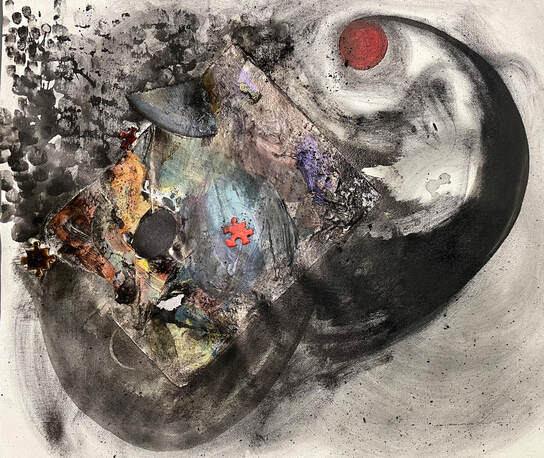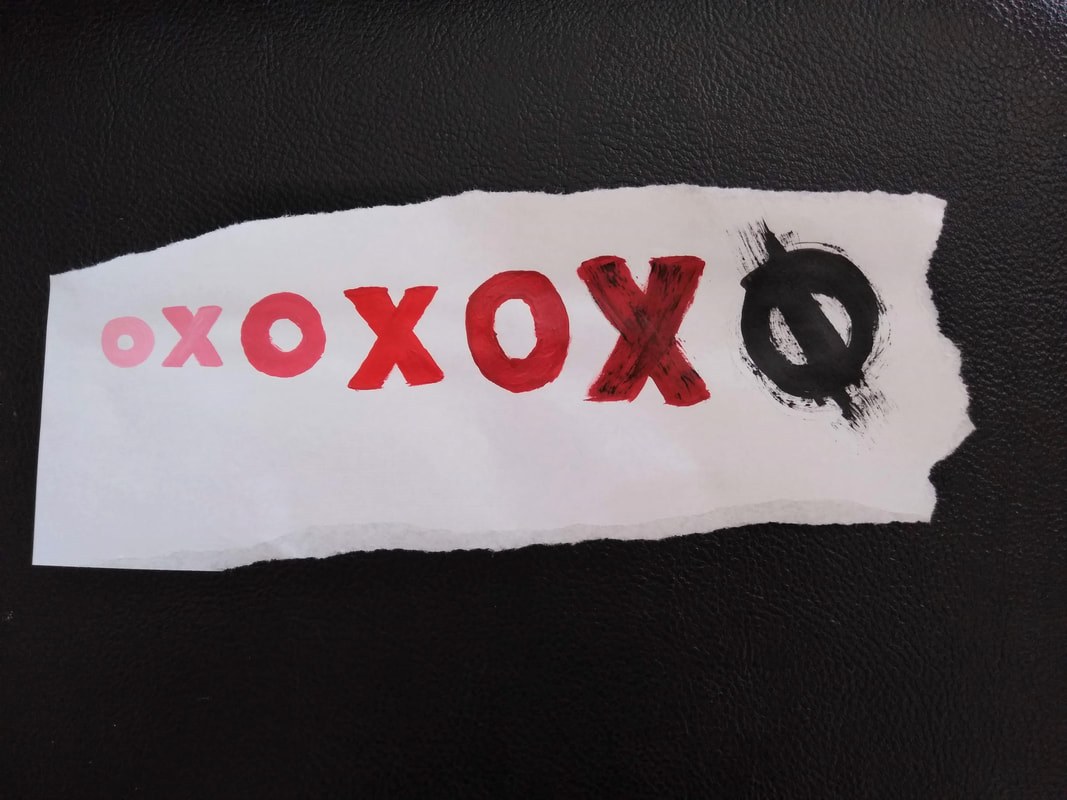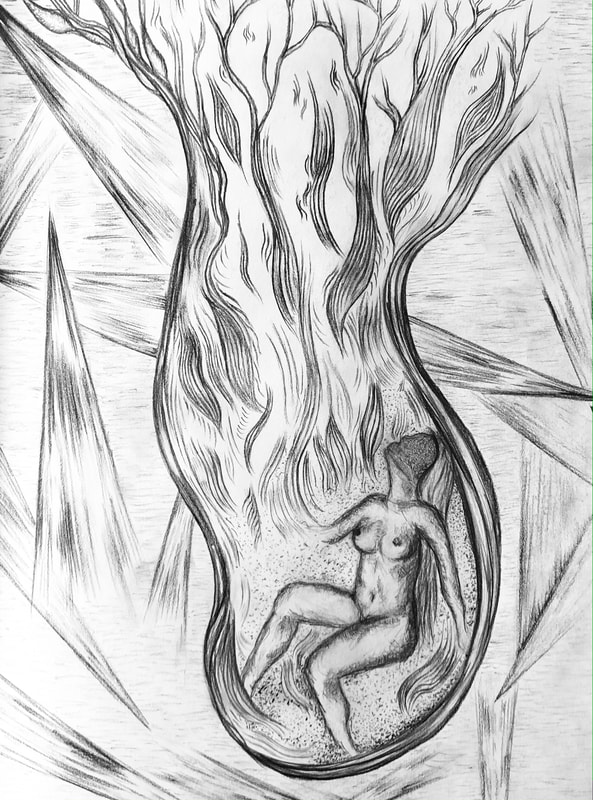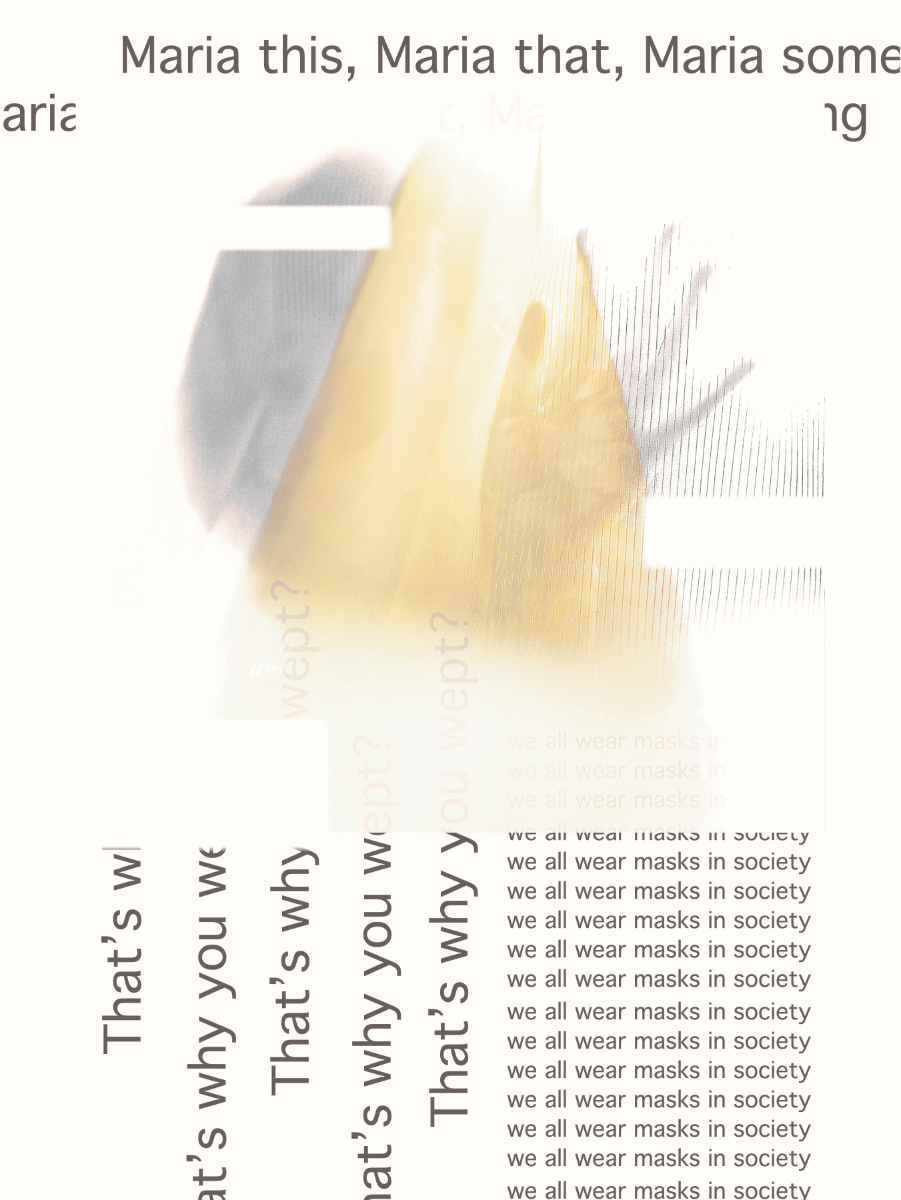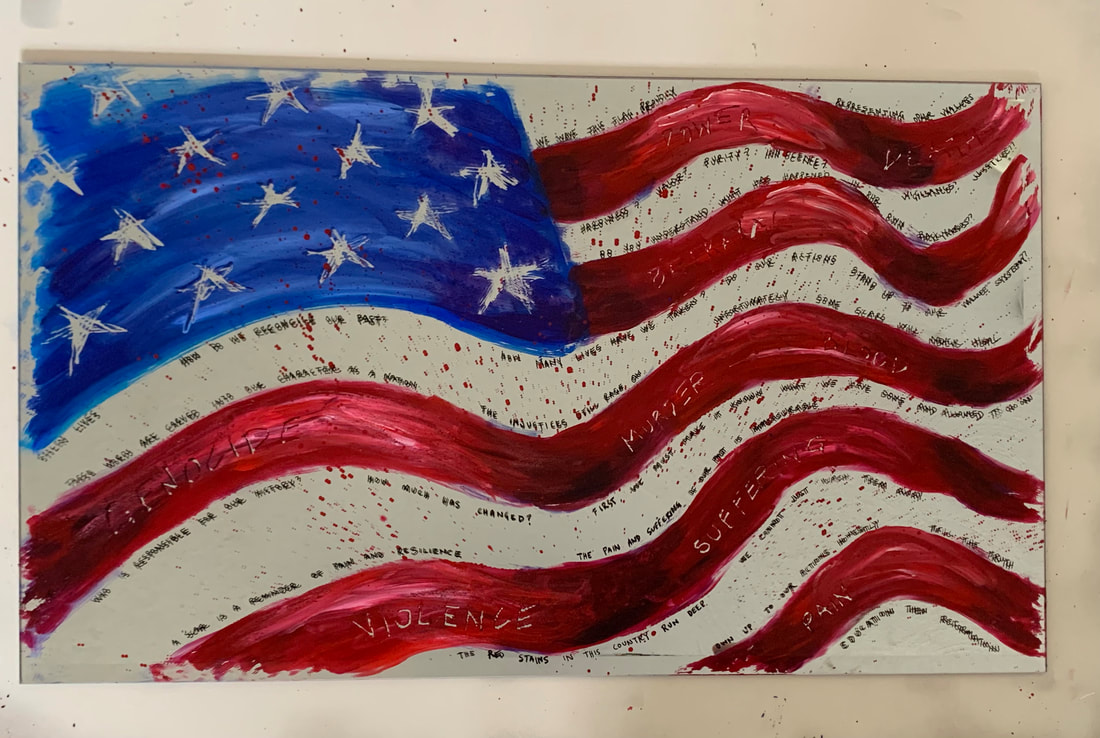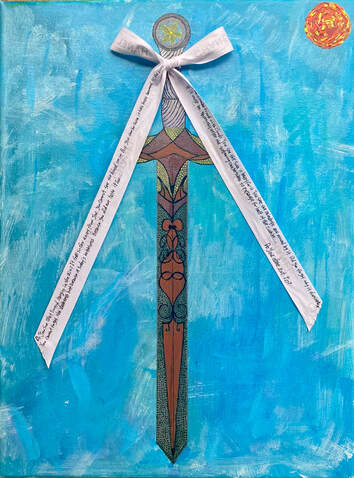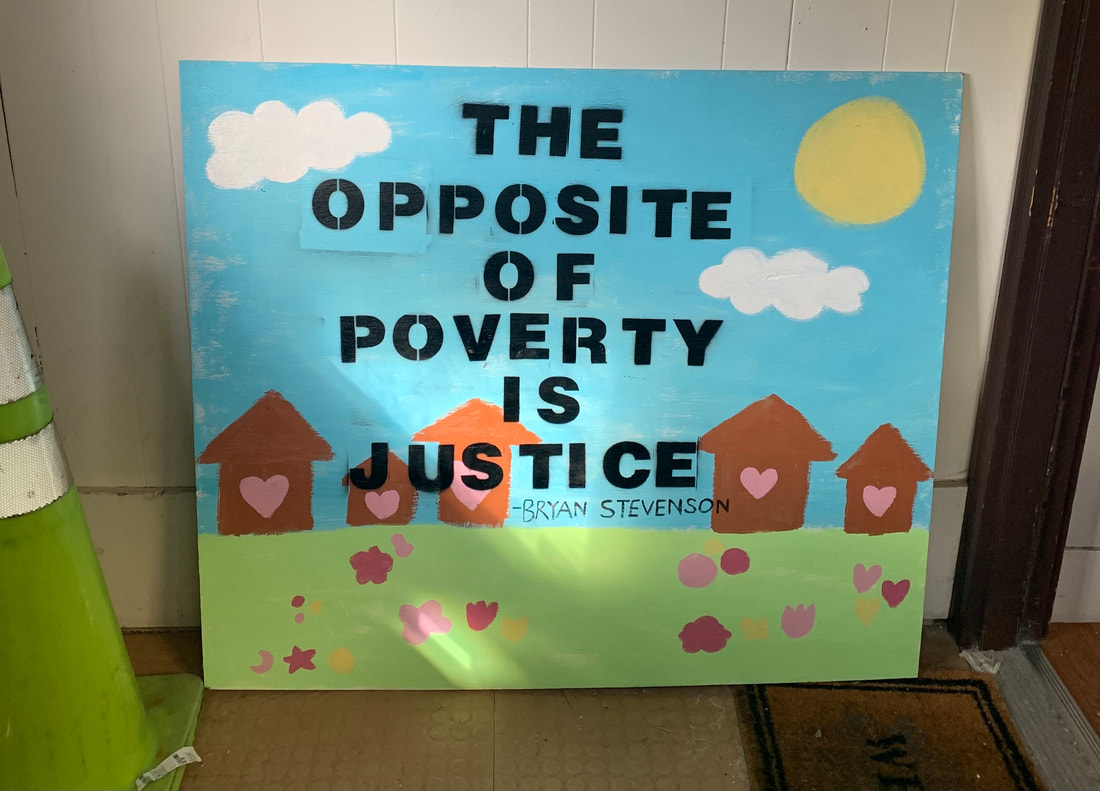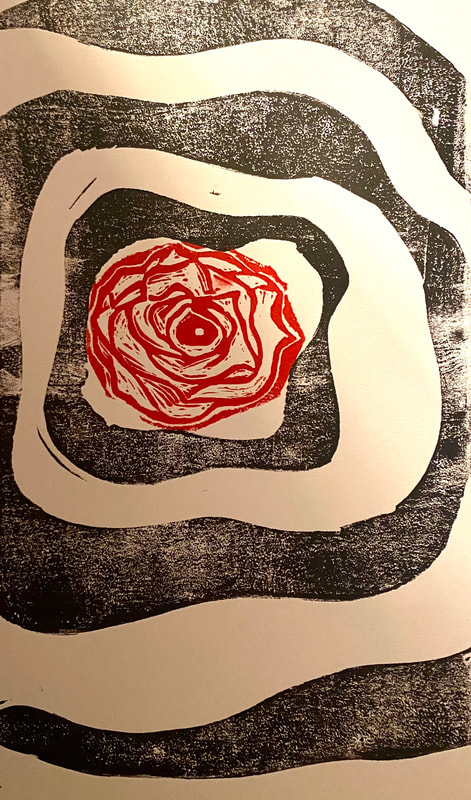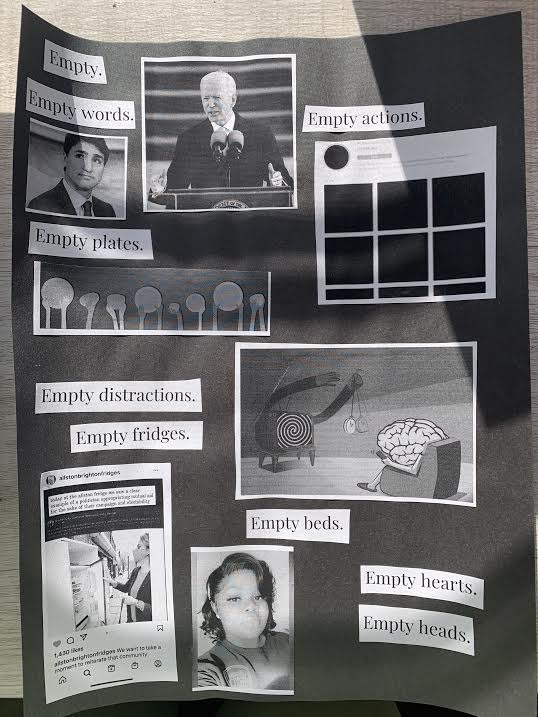Collective Artwork in Response to Other Provocations Encountered
Catherine Jones
|
Catherine
by Jessica Tovey This piece titled "Catherine" is created in honour and reflection to Catherine Jones' interview with the Marshall Project. My aim in this piece is to break down our differences as human beings. More and more everyday I believe that we are neither good nor bad, we are both and neither. As humans we are capable of the most horrible things, and at the same time we are capable of the deepest empathy. I also grapple with my own identity as white woman in this piece, and ask myself: Who is the real superpredator? Is it those who do horrible things (all of us)? or is it those who punish others for it? And if it's the latter, how different are they from me? |
|
|
|
Superpredator
by Grace Wodarcyk This piece is called "Superpredator," in response to Catherine Jones' experience as a formerly incarcerated person. Below the acrostic poem is a cartoon that juxtaposes the treatment of incarcerated youth by the media/society and the reality of their situations. Incarcerated children are victims of the system, not superpredators. |
|
Not A Superpredator
by Tara Palazuelos This movement piece is based on the Marshall Project's video of "Superpredators" and inspired by Catherine Jones' story as well as the track "Superpredator" by Joey Bada$$. This piece is inspired by bringing back attention to the human body and identity, since identity is a contentious thing for many incarcerated people, and the identity of super predator is one that does not serve the human being subjected to that title. |
|
|
Superpredators
by Grace Shaver This video is in response to "The Marshall Project" video "The Making of Superpredators." |
|
|
|
Empathy
by Cheryl Freeze This audio track is in response to a video from The Marshall Project called "The Making of Superpredators." |
|
From Sweet Baby Girl to Superpredator or,
Kisses and Hugs to Unwelcome and Shunned by Leah Murthy This work is inspired the Marshall Project interview with Catherine Jones, a woman who was labeled as a superpredator as a little girl for killing an abusive relative which was viewed during the class. It is the artist's attempt to encapsulate the woman's description of how the community and her family perceived her over time. |
Frances Ellen Watkins Harper
|
We Are All Bound Together
by Allison Donahue, Evelyn Li, Kateri Gemperlein-Schirm, and Tara Palazuelos A soundscape work that respond to Frances Ellen, and to provide power to every woman. |
|
|
|
Response to Frances Ellen Watkins Harper
by Daniela Perez-Retes, Grace Shaver, and Grace Wodarcyk In May of 1866, Frances Ellen Watkins Harper gave an address to the Eleventh National Women's Rights Convention in New York City, This audio piece combines several striking lines from her speech. |
Jodelynn Billington
|
Born Into Blood
By Allison Donahue, Rose Whitcomb, Grace Shaver, and Jessica Tovey "Born Into Blood" came into fruition after we read a letter written by an incarcerated mother to her daughters. We were disturbed and saddened to think and learn about some of the many brutalities incarcerated mothers and their children experience. We aimed to capture a snapshot of a mothers humanity, who cared so much for her daughters. Unfortunately, the inhumane incarceration system continues to dehumanize this aspect of many women's lives. Our aim in this art piece is to move people's hearts, and motivate people to include incarcerated women and their children in their activism. |
|
|
|
I Often Dream
by Megan Lewis In listening to the stories of those who have been and are incarcerated, I am overcome with emotion. How they must long for home, for love, and for understanding. |
Marias of Brazil
|
|
Women of the World
by Grace Wodarcyk This collage is in response to the Marias of Brazil reading. This assignment asked us to create art that reflects our identities. I chose to create based on how society views me as a woman. This collage is overly saturated in "feminine" pink and highlights the things women have to deal with on a daily basis, including sexualization from a young age and stereotypical gender roles. |
Bryan Stevenson & the Lynching Museum
|
Dissolved by "The Dream"
by Alyssa Jewell This piece was made in response to the Bryan Stevenson Lynching Museum. I wanted to focus on the idea of this lost history and focus on the way that the ideas of freedom and the American dream have practically dissolved this country's brutal and disturbing history. I invite the view to consider this: How much has anything really changed here? |
|
|
We Wave This Flag
by Jimmy Rotondo This painting on mirror asks us to examine the history carved into the flag that we wave proudly. Do we truly understand who we are as a nation and the horrible things we have done? All 'white' areas are mirror reflecting the viewer back at themselves among the chaos of the country. |
|
Lynching Museum Graphic
by Tara Parazuelos This graphic was inspired by the National Memorial For Peace and Justice. I was inspired by the work done by the Equal Justice Initiative and created a potential virtual infographic that could be potentially disseminated by the organization on various virtual platforms as a brief overview of the memorial and its mission. |
|
|
|
Soundscape on Race, Incarceration, and Injustice
by Alyssa Jewell, Jessica Tovey, and Rose Whitcomb This soundscape was created in response to the powerful work of Bryan Stevenson and the Equal Justice initiative. We were struck by Stevenson’s discussion of race and the criminal justice system in his Ted Talk “We Need to Talk about an Injustice,” and the long history of American racism and lynching in the National Memorial for Peace and Justice. Racism influences the decisions that are made about the freedom and survival of people of color. Our sounds aim to encapsulate a person's humanity against the harsh brutality of the incarceration system. |
|
|
Face All Away
by Rose Whitcomb In studying Bryan Stevenson's leadership with the Equal Justice Initiative, activism and education in criminal justice reform, and promotion of suppressed voices in the history of African Americans and slaves, I was struck by how much evil is accepted in American society, which we frequently "face away" from. Instead of allowing people to exist in dehumanizing conditions (such as prison), Stevenson declares that our society will be judged based on how we take care of those among us who are "forgotten," or in the most need of help. This musical composition is a reflection on how I can refocus my passions to love people who I might have previously judged or turned away from. "Ultimately, you judge the character of a society, not by how they treat the rich and the powerful and the privileged, but by how they treat the poor, the condemned, the incarcerated." -Bryan Stevenson Inspired by Bryan Stevenson "We Need to Talk about an Injustice." youtu.be/c2tOp7OxyQ8 |
|
The Opposite of Poverty is Justice
by Jessica Tovey I wanted to amplify these powerful words by Bryan Stevenson. When I created this art piece, I pictured it sitting in front of my home for passerby's to reflect on. Poverty is an injustice: it is violent that we make people live in poverty every day. Justice is often seen as something complicated, but for so many, justice could be as simple as living life in a suburb. |
|
|
Just a white man having a bad day
by Grace Wodarcyk This piece is a called "Just a White Man Having a Bad Day." Our assignment for this week was to watch Bryan Stevenson's Lynching Museum video. Although I could not relate to the treatment of Black people in America, I could relate to the racism that Asians experience here. The shooting in Atlanta had just happened the week before, so it was on my mind. This piece was an attempt to cope with the sadness, anger, and feeling of helplessness that I was experiencing after the news. Although the spoken word piece is unrelenting, a calm Chinese folk song called "Lotus Picking Song" plays on in the background. |
|
Strange Fruit
by Grace Shaver A movement piece to "Strange Fruit" in response to the Lynching Museum. |
|
|
|
May I Present You a Flower
by Evelyn Li This is a response for the Lynching Museum, after the reading all I want to do is present a flower to those people who is meaningful for all of us. |
Albert György's sculpture "Melancholy"
|
Blood, Not Oil
by Jimmy Rotondo This poem is a reflection on the human being a cog in the machine of the world today. |
|
|
Changes
by Rose Whitcomb and Delroy Richardson This piece is a reflection on how racist policing practice and community dynamics have affected our local community in Boston. It tells a story of people in our community fighting for justice, from those who are incarcerated, to lawyers, and even protestors demanding equality in the streets of Boston. We need a change, because our criminal justice system is flawed. Even on an individual basis, we need to change how selfish we are, and how quick to judge... transforming us into more loving and selfless people. |
|
|
|
Yeah?
by Evelyn Li A funny video of a figure living in a weird way, with out notice but still have the same feelings to things that normal people like or hate. |
